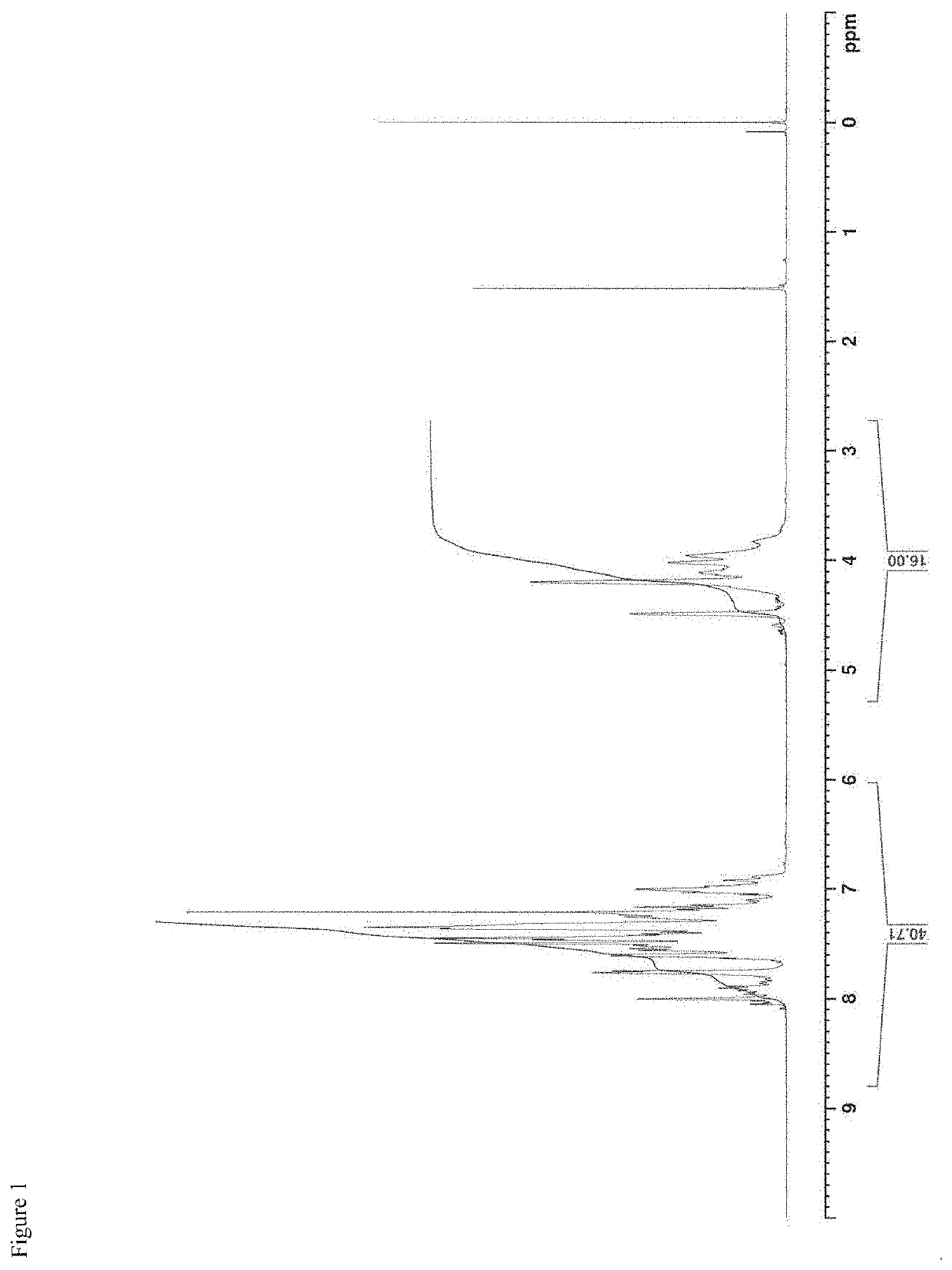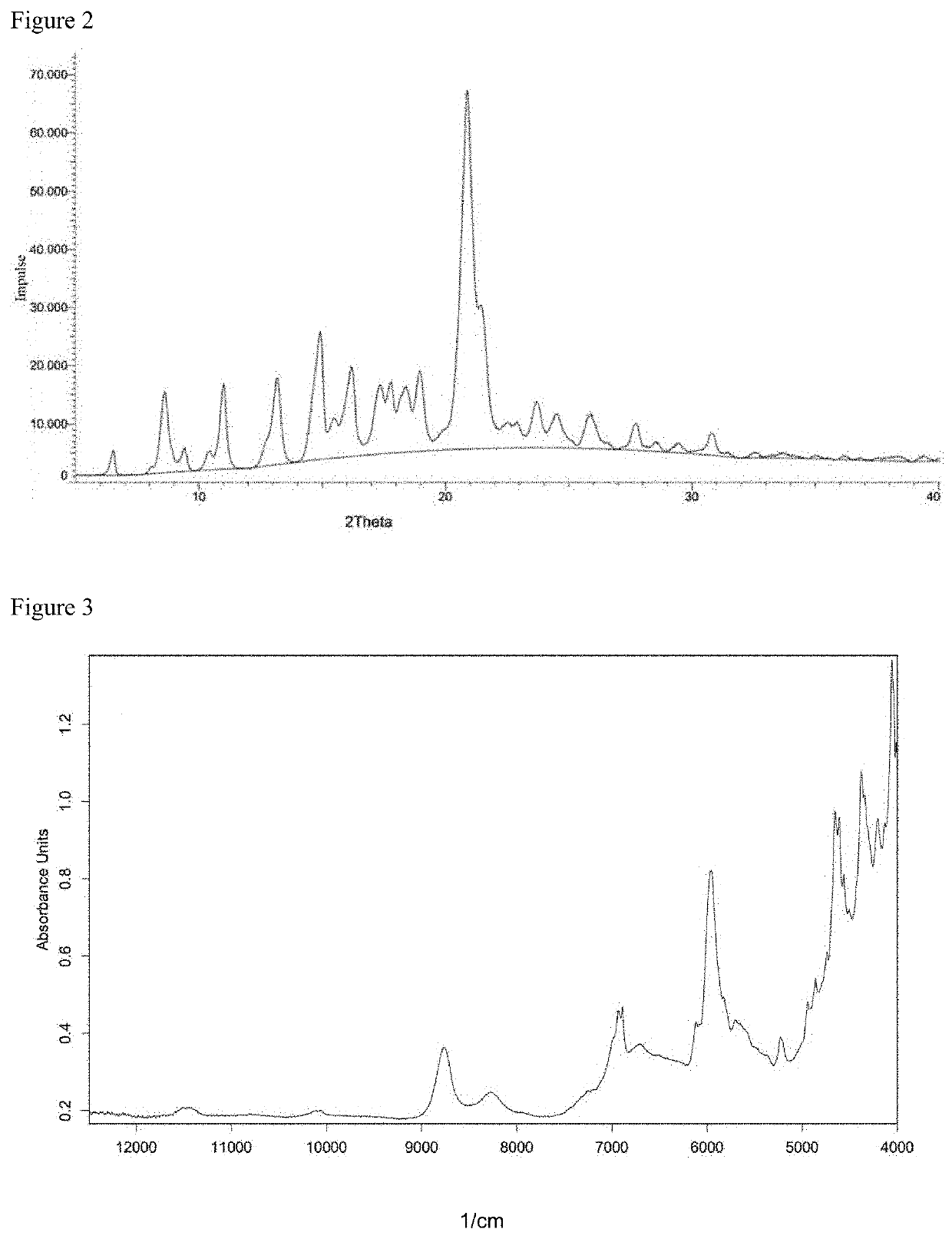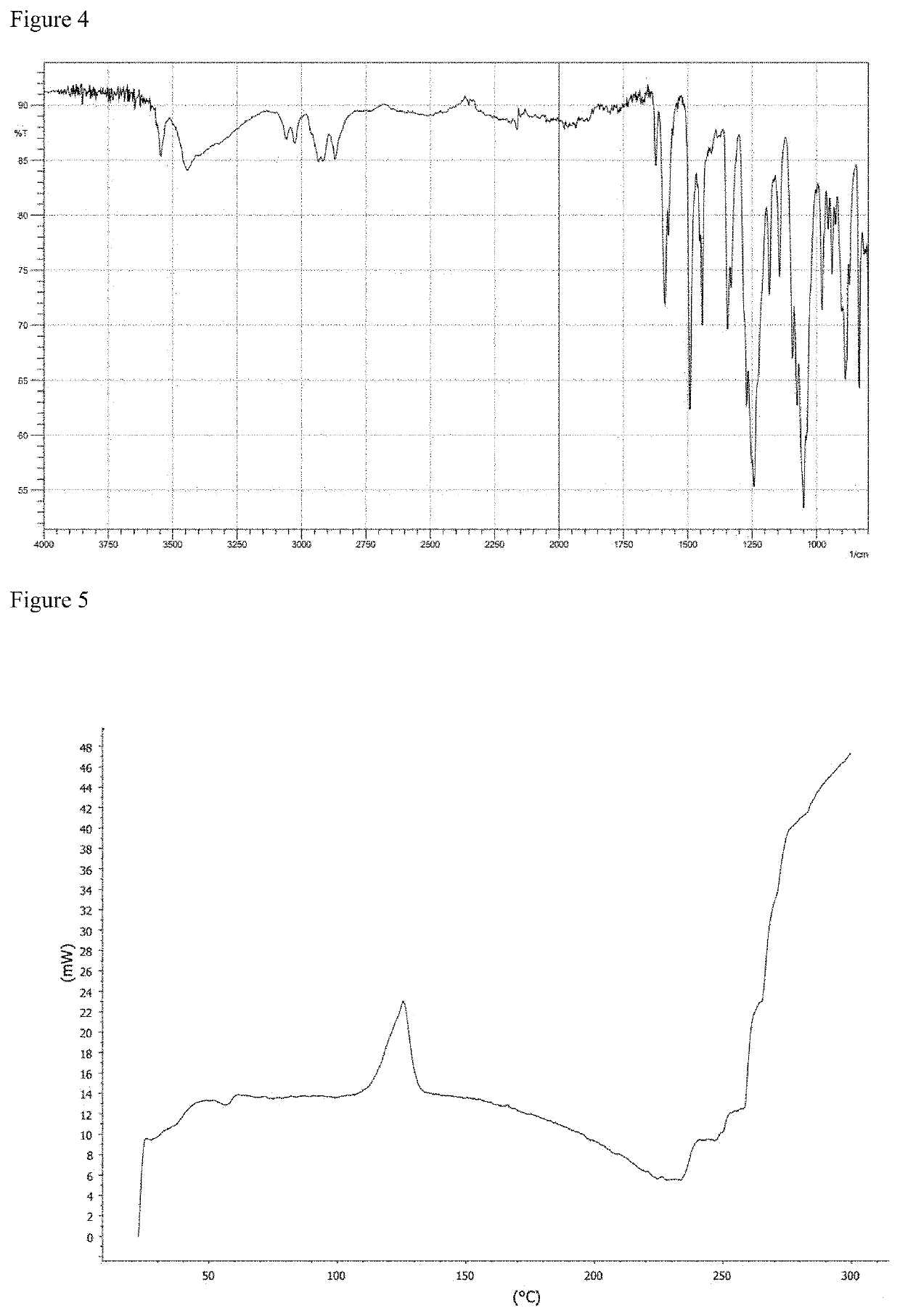Thermoplastic resin, method for manufacturing same, and optical lens
- Summary
- Abstract
- Description
- Claims
- Application Information
AI Technical Summary
Benefits of technology
Problems solved by technology
Method used
Image
Examples
example 1
[0420]As raw materials, 31.6 kg (60.0 mol) of 2,2′-bis(2-hydroxyethoxy)-6,6′-diphenyl-1,1′-binaphthalene (hereinafter sometimes abbreviated as “BINL-2EO”), 13.5 kg (63.0 mol) of diphenyl carbonate (hereinafter sometimes abbreviated as “DPC”) and 0.074 g (8.8×10−4 mol) of sodium hydrogen carbonate were put into a 50 L reactor equipped with a stirring machine and a distillation apparatus, and the mixture was heated to 180° C. under nitrogen atmosphere and under 760 mmHg. 20 minutes after the initiation of heating, complete dissolution of the raw materials was confirmed, and after that, it was stirred for 120 minutes under the same conditions. After that, the degree of pressure reduction was adjusted to 200 mmHg, and simultaneously, the temperature was elevated to 200° C. at a rate of 60° C. / hr. During this, initiation of distillation of by-produced phenol was confirmed. After that, the mixture was kept at 200° C. for 40 minutes to perform a reaction. Further, the temperature was eleva...
example 2-a
[0422]The operation was carried out in a manner similar to that in Example 1, except that as raw materials, 7.9 kg (15.0 mol) of BINL-2EO, 24.2 kg (45.0 mol) of BNEF and 13.5 kg (63.0 mol) of DPC were used.
example 2-b
[0423]The operation was carried out in a manner similar to that in Example 1, except that as raw materials, 15.8 kg (30.0 mol) of BINL-2EO, 16.2 kg (30.0 mol) of BNEF and 13.5 kg (63.0 mol) of DPC were used.
PUM
| Property | Measurement | Unit |
|---|---|---|
| Thermoplasticity | aaaaa | aaaaa |
| Refractive index | aaaaa | aaaaa |
Abstract
Description
Claims
Application Information
 Login to View More
Login to View More - R&D
- Intellectual Property
- Life Sciences
- Materials
- Tech Scout
- Unparalleled Data Quality
- Higher Quality Content
- 60% Fewer Hallucinations
Browse by: Latest US Patents, China's latest patents, Technical Efficacy Thesaurus, Application Domain, Technology Topic, Popular Technical Reports.
© 2025 PatSnap. All rights reserved.Legal|Privacy policy|Modern Slavery Act Transparency Statement|Sitemap|About US| Contact US: help@patsnap.com



